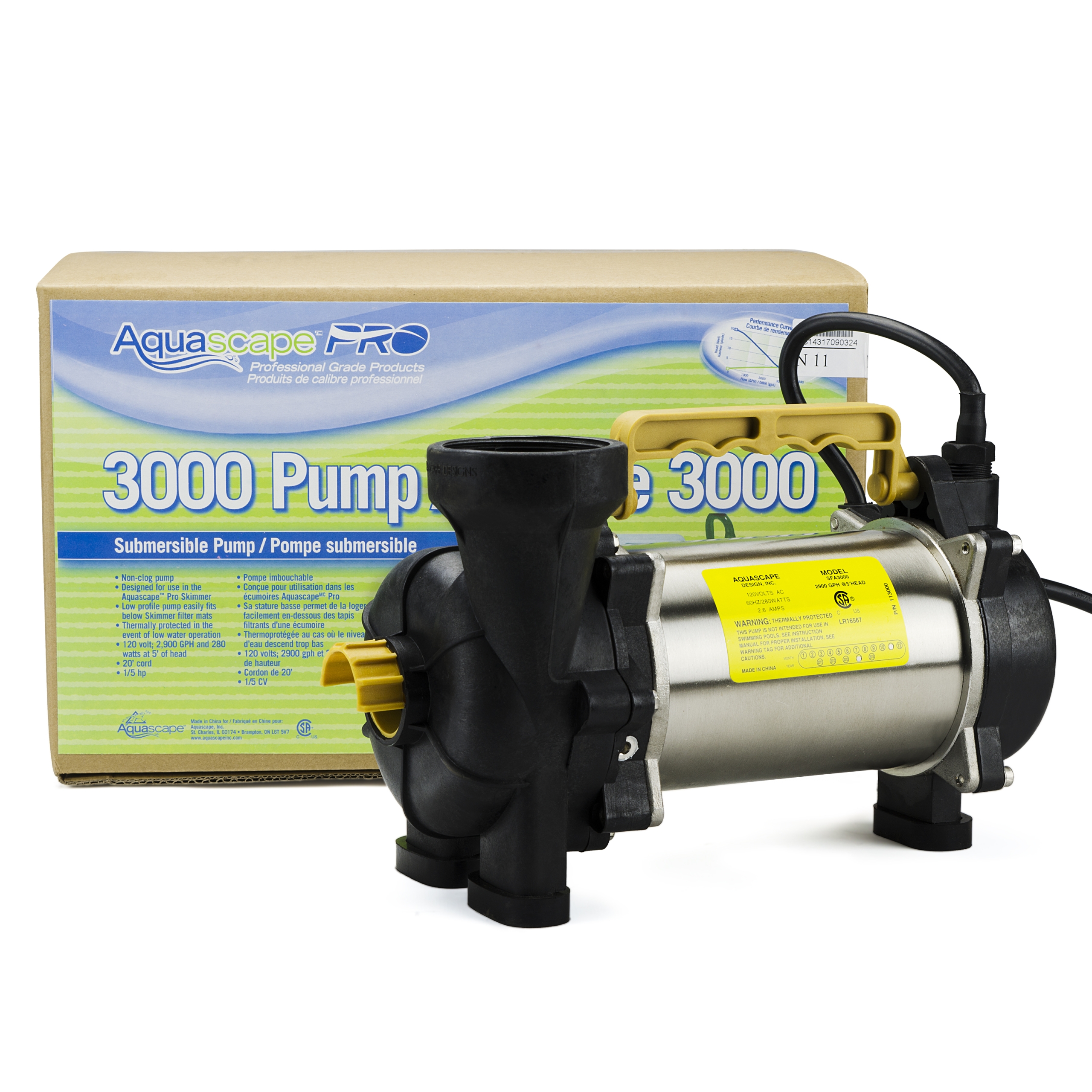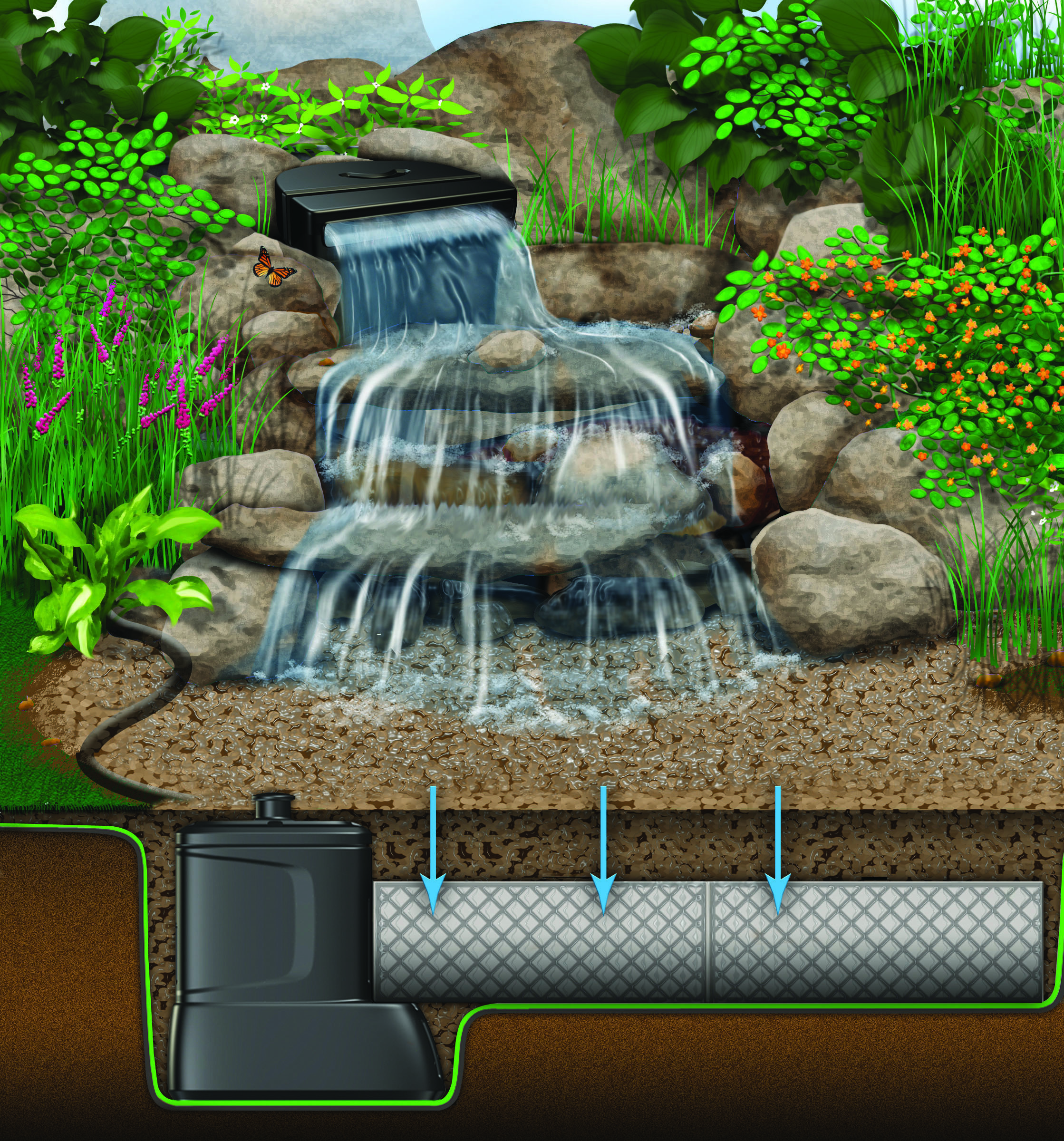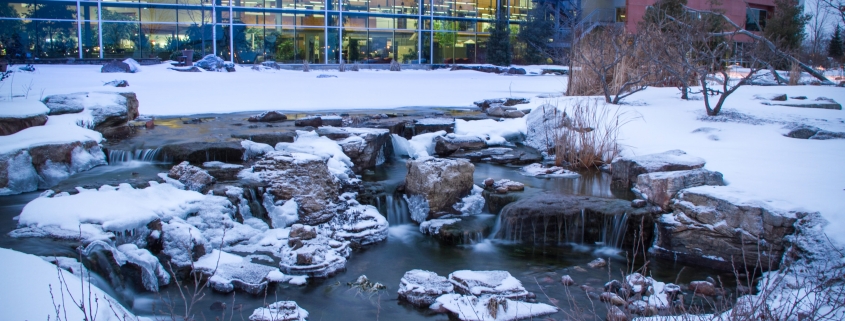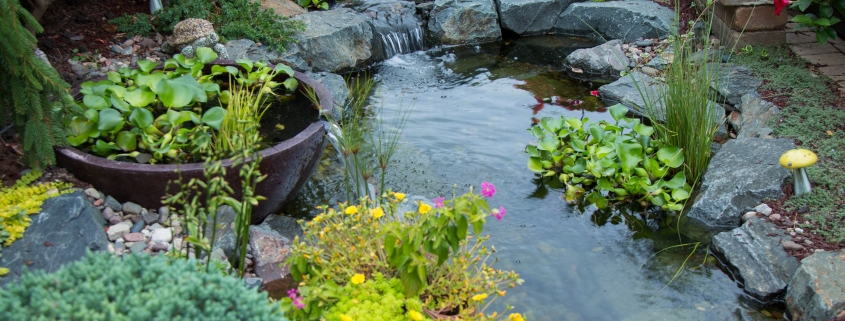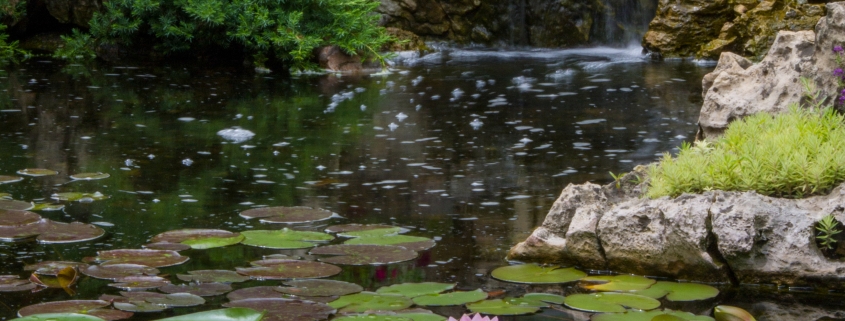Best Pond Pump Information 2021
Pumps keep the water in your pond healthy. They help evenly spread nutrients in the water to fish, plants and other aquatic life. Running water prevents stagnation and cuts down on algae and mosquitoes. Keeping the water moving ensures that oxygen levels are distributed throughout the pond. Pumps also provide power for a pond’s water features, like waterfalls and fountains.
This guide will help you learn about the best pond pumps for your garden.
~
The best water pumps for your pond and its fountain or waterfall come in variety of types and styles. They include submersible, external, magnetic drive and direct drive. Each of these water garden pumps offers its own advantages.
Submersible Pumps: These pumps are designed to work while wholly submerged in water. Typically, they are installed in the deepest part of the pond. Submersible pumps can be placed either directly into your pond or in a skimmer box or pond vault.
- Easy to install.
- Work well in environments that capitalize on a natural setting.
- No need to camouflage the pump.
- Run very quietly so there’s no distracting noise in your garden.
- Submersible pumps can be used to drain your pond, if needed.
- Range in pumping size from 50 to 5,000 gallons per hour.
- Can generate higher energy costs than other pump types.
- For smaller ponds, submersible pumps are generally more economical.
Tip: Some submersible pumps use oil to operate. If the pump seal breaks and leaks harmful oil coolant into the water, fish can be hurt or killed. If you have fish or other aquatic life in your pond, you’ll want to look for a submersible model that does not use oil.
External Pumps: External pumps can move a high volume of water, yet usually have lower energy costs than submersible pumps. They are not as quiet as submersible pumps. They should be placed in a dry location near your pond. External pumps are a lot more complicated to install. However, they are generally more reliable.
- Available as self-priming pumps able to draw their own water.
- Can be loud, disturbing the quiet of your garden.
- Work well for larger ponds that are 1,000 gallons or more.
- Offer long-lasting performance and easy repair.
- Require less routine maintenance than submersible pumps.
Tip: Pumps that are not self-priming can burn out a motor if the power shuts off momentarily and then comes back on. Protect against this by installing a check valve.
Magnetic Drive: In a magnetic-drive pump, an electrical charge creates a magnetic field that causes the magnet on the impeller to rotate and pump water. Since they have no seals to wear out, they require little maintenance. Occasionally, you will need to clean the impeller and its chamber for the most efficient operation.
- Completely sealed. Magnetic-drive pumps do not require lubrication.
- Because they don’t contain oil, magnetic-drive pumps are safer for ponds with fish, since oil leaks don’t occur.
- Don’t generate high head heights. Magnetic-drive pumps are unable to lift pond water vertically, which you might need to supply water to a fountain. They are not the best water pumps for fountains.
- Work best in cleaner environments with little or no debris.
- Highly efficient and cost-effective.
Direct Drive: Direct-drive pumps have an enclosed motor that is powered by electricity, which turns the impeller shaft.
- Achieve significant head height, so they are able to move water vertically. They are among the best water pumps for fountains and waterfalls.
- Typically more expensive to operate.
- Push water rather than pulling it.
- Not easily repaired.
Tip: Some models seal the motor in an oil-filled shell with seals around the cord and impeller shaft. These are risky to use if you have a pond stocked with fish. There is an ever-present danger of water contamination if a leak occurs. Many newer pumps, however, feature alternative lubrication that is safe for fish. Look for oil-free models if you have fish or other aquatic life in your pond.
Pond Pump Calculations
Pond Pump Features
Garden Pond Care in Winter
Appropriate pond care in winter is extremely important. As the winter season now commences in full swing, things in your garden pond come to a halt. The fishes go into hibernation mode. You shut down your pumps and filters. However, the debris that was collected during the pre-winter months continues to decompose releasing gases into the water. These gases also fuel algae growth. Adding to the complexity, a sheet of ice forms over the water trapping the fish and water beneath it. As the oxygen level decreases due to fish consuming it, the level of toxic gases goes on increasing due to the debris, creating an extremely harmful environment for the fish.
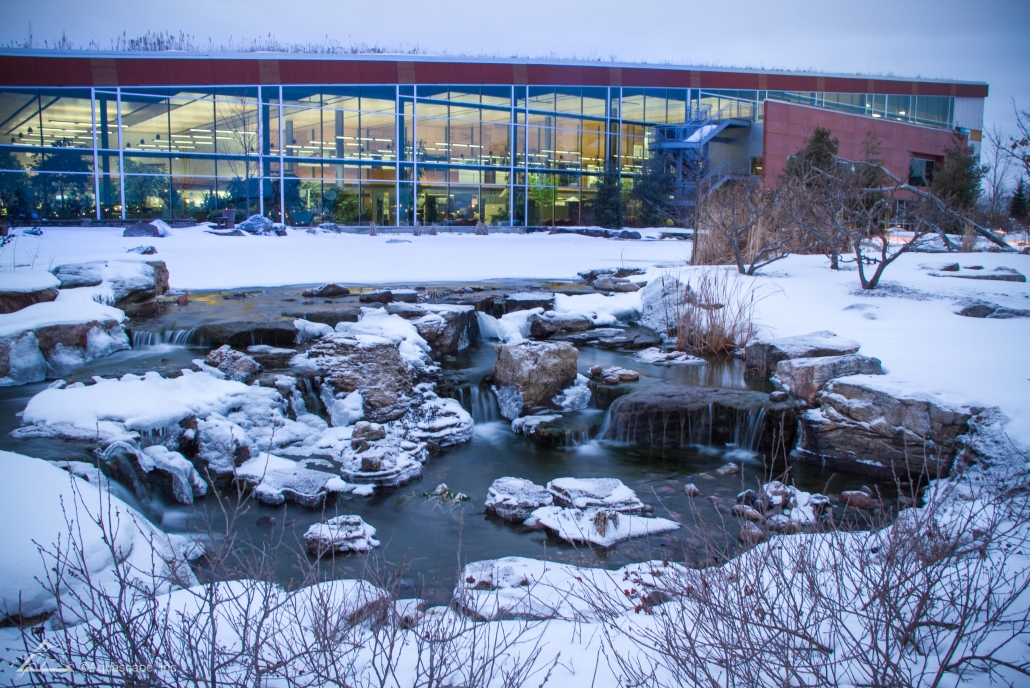
One of the ways is to provide an air hole on the surface of the water so that the fish can survive in winter. Even though the fish go into hibernation in the winter months, they still need oxygen to survive the winter season. If you turn your filters off for the winter, you’ll need to supply oxygen with a pond aerator or a small recirculating pump. Such an aerator should be ideally placed on a shelf in the pond. It will help to maintain the hole on ice while adding oxygen to the pond. Aquascape provides the best in class pond aerator kits for your garden pond.

If you live in an area where climates are colder for a longer duration of time, you may have to use a de-icer along with an aerator. This will help to maintain the hole on surface ice which allows the gases to escape from the water.
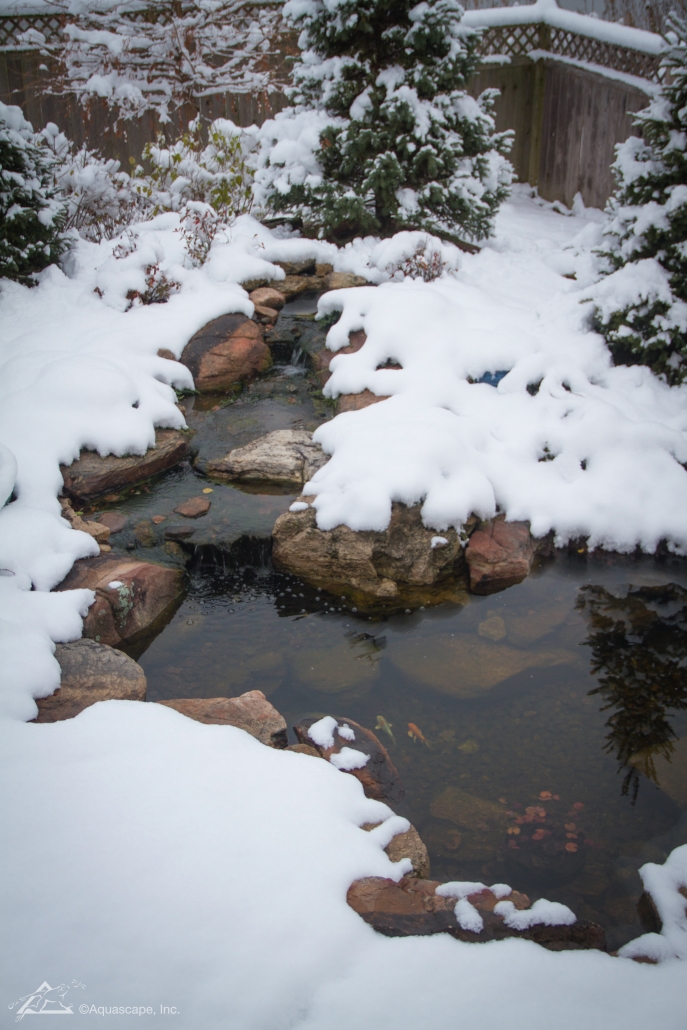
When the temperature drops below 50 degress F , the metabolism of the fish drops. Hence, it’s ideal to stop feeding the fish below this temperature as it may prove very harmful for the fish. Following the above guidelines will definitely help you in pond care in winter.
Fish Care for Garden Water Pond
The addition of fish to a garden water pond gives one a lot of enjoyment. However, it also makes the owner knowing about water maintenance of paramount importance. Although fish care for garden water pond isn’t tricky, it does adds an extra effort on your part when it comes to pond maintenance.
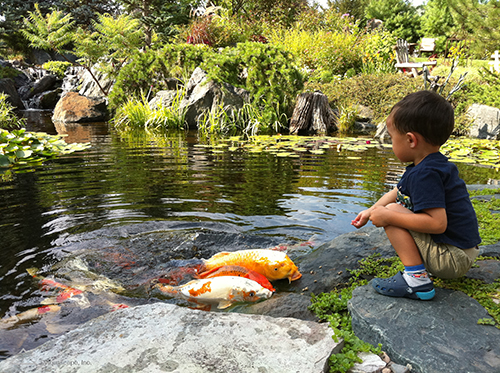
Fish require a shady location inside the pond to escape from the sun’s scorching heat and hide from birds. Adding floating plants like lilies and lotus and placing stones inside the pond can provide the fish with plenty of areas to hide. Oxygenating plants are essential if you want to add fish to your garden pond. Oxygenating plants help in removing carbon dioxide and increasing the levels of oxygen in the water.
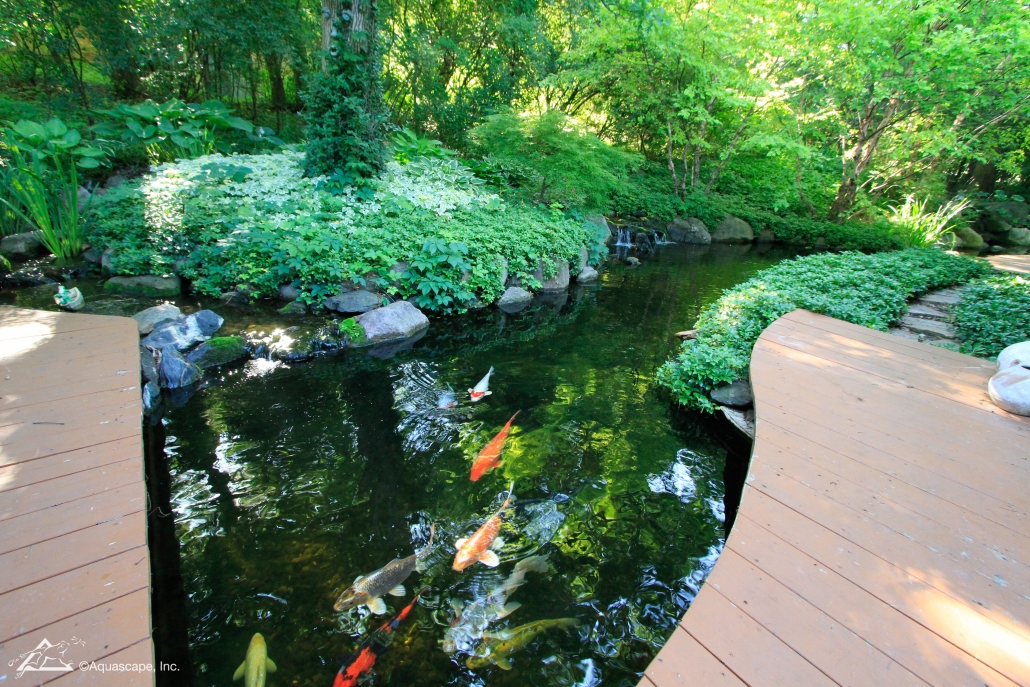
Always check and maintain proper levels of chemicals such as chlorine in the water. An excessive level of such substances can prove to be incredibly harmful to fish in the water. Herbicides, pesticides, and fertilizers used for aquatic and surrounding pond plants can harm the fish in the water. Try limiting the use of such chemicals and make sure the waste flows through the drainage properly.
Fish require clear and freshwater. To avoid stagnation, ensure that the filters and pumps are functioning correctly and water flow is maintained. It is essential for a regular check of these pumps and filters and to replace them whenever required.
In the summer, when the water temperature is above 60 degrees Fahrenheit (15 C), feed your fish a high protein food every day or every other day. When the temperature drops below 50 degrees F., discontinue feeding as the digestion of fish drops drastically in winter. Knowing this is very important for fish care for garden water pond.

Fish, like all creatures, need healthy, nutrient-rich food to thrive. Aquascape fish foods contain probiotics that aid in digestion, optimize growth rates, and reduce fish waste. Quality ingredients, including multivitamins and stabilized vitamin C, provide superior nutrition and will not break apart and cloud pond water. Aquascape fish foods are scientifically formulated to provide all pond fish, including koi and goldfish, premium quality nutrition at an affordable price.
- Floating pellets are ideal for all pond fish
- Includes stabilized multivitamin and probiotics
- Will not break apart and cloud water
- Contains high-quality protein
Things to remember for Garden Pond Maintenance
Garden ponds of all sizes need regular maintenance. Mostly they need to be looked after every week. Various factors affect the pond‘s maintenance, such as the materials from which the pond is constructed, if fishes are there in the pond, the plants surrounding the pond. Garden pond maintenance also depends on the climate, and the seasons like winter and spring will require different maintenance requirements.
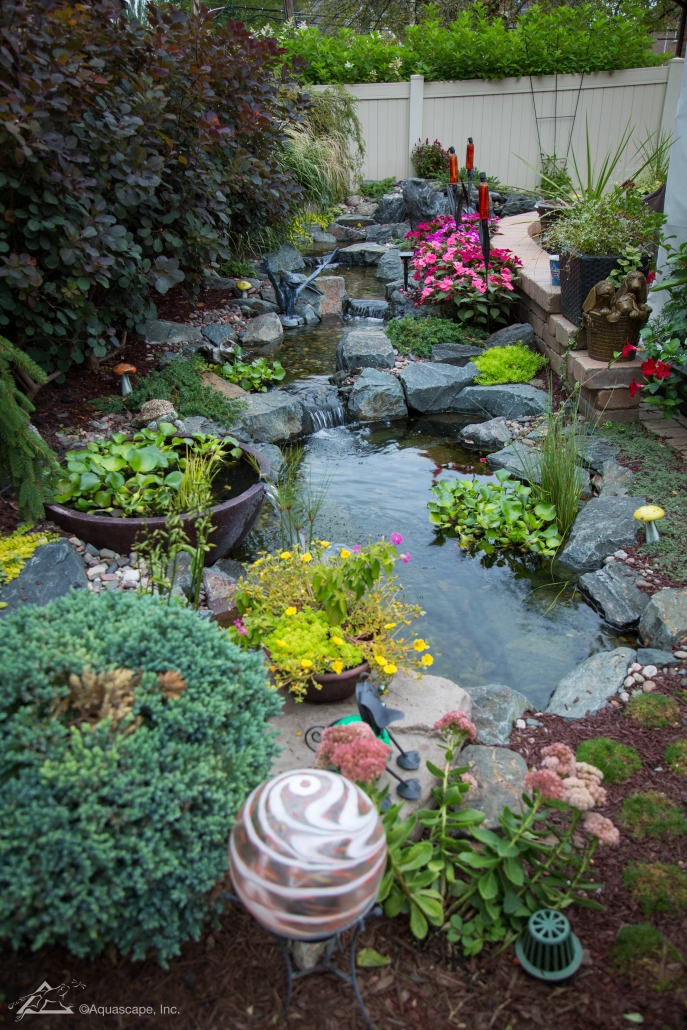
Locate and fix any patch leaks. You can use a pond repair kit for this purpose. Check regularly for any issues in garden pond machinery like pumps and filters. Replace the parts if necessary. Proper functioning of pumps is crucial for keeping the water circulating in the pond. It helps to prevent stagnation and restricts the growth of algae and mosquitoes. Pumps and filters also help in maintaining the water flow.
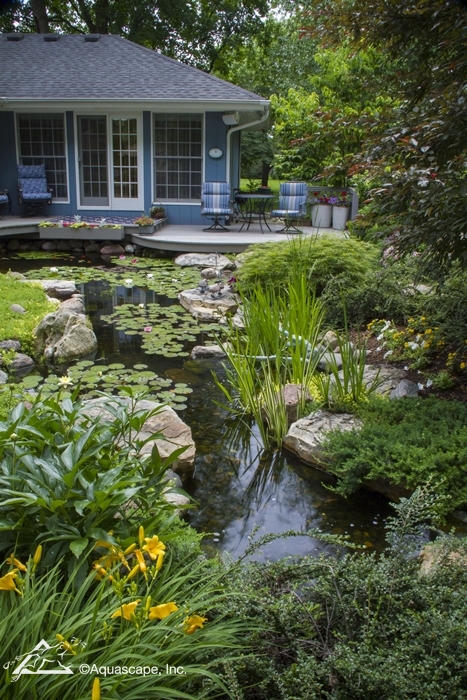
It is also advised to regularly clear the pond of any leaves and debris from surrounding plants and trees. Adding some aquatic plants can also help to increase the oxygen levels. In addition to planting floating plants, keep a check on algae growth.
Garden pond maintenance requires having a balance water level is exceptionally crucial. It helps to prevent the build-up of minerals. Also, the chemical levels of chlorine and chloramines in water should be kept in check. An excess of these chemicals may prove extremely harmful for fish and other aquatic animals in the pond.

Ensuring the health of fish in the pond is also very important. Reduce fish feeding in winter as their digestion slows down in winter months. During the winter months, move the fish to an indoor pond if the temperatures drop too much. Take care of the surrounding plants by using proper fertilizers.

